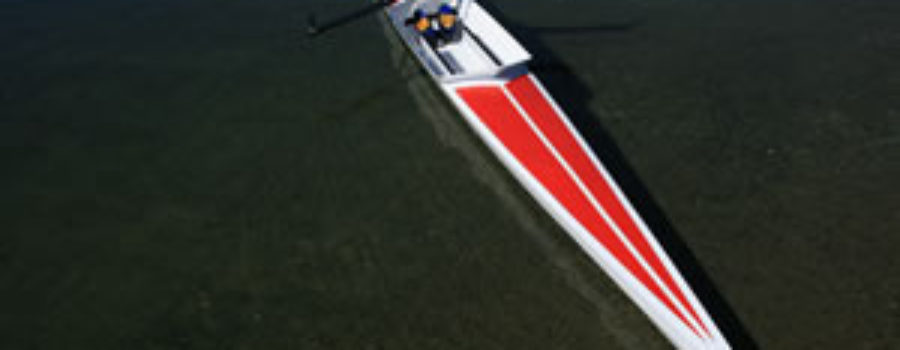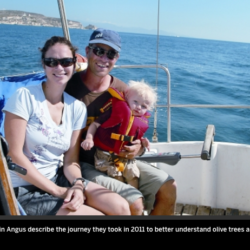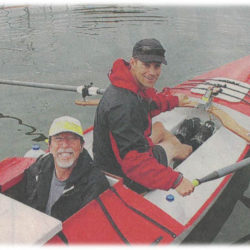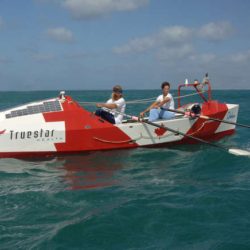We’ve designed and built our newest rowboat, the Cambridge Racer. As you may have guessed from its name, this boat follows the lines of traditional rowing sculls, and is designed for speed. The 39 lb (17.5 kg) vessel is constructed from marine Okoume plywood, epoxy and fibreglass. Attributes incorporated to ensure a fast ride include a long waterline length (24’), narrow beam, and minimal wetted area.
Fingers were crossed as we launched the boat at our local marina on Vancouver Island. A few spectators gathered nearby as I climbed into the tender vessel. Fortunately, the rowboat handled exactly as we’d hoped and slipped easily through the water as I pulled on the oars. After a few full strokes the GPS registered 13.3 km/hr (7.2 knots). The stippled bottom hasn’t yet been sanded and painted, and foot straps are still to be added, so we’re hoping the boat will be able to move at 15-16 km/hr when complete.
The ergonomics for the lightweight (13 lb) sliding rowing system felt good. All the dimensions, angles, etc are identical to that developed for competitive racing shells. One thing that needs to be finessed is the adjustable footplate. We’ve created a unique design for adjusting the footplate, but felt there was a little bit too much play from side to side. This will need to be modified.
The boat isn’t quite complete. Over the next couple of weeks we’ll be tweaking the footplate, adding the round hatches, fairing and painting the vessel, and experimenting with the skeg (reducing the skeg size to the minimum required). For those interested in building a rowing scull, we will have full-sized plans and manuals available after completing several weeks of thorough testing. Full kits will be available at a later date (expected to be $800-900).
We’re creating the Cambridge Racer to try breaking the 24-hour flat water human powered distance record. The attempt will take place in the spring/summer of 2011.
Colin rowing Cambridge Racer in Comox marina

























